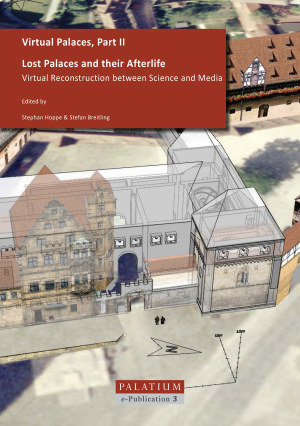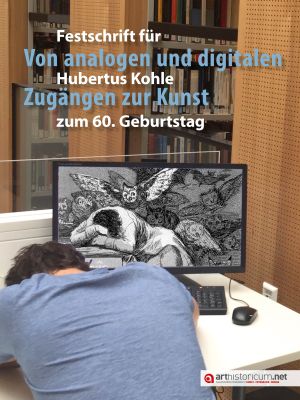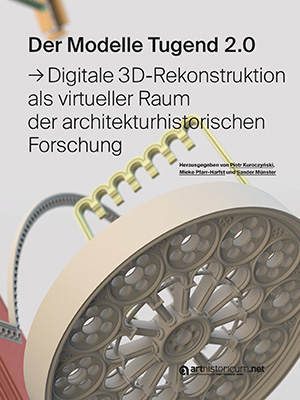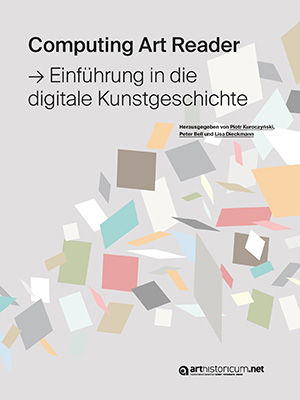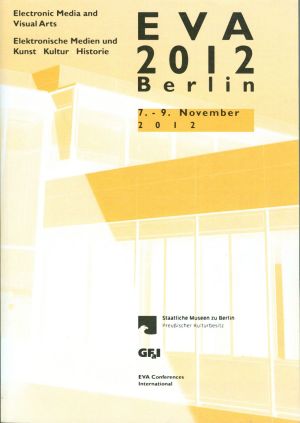Hoppe, Stephan
Virtual Palaces, Part II: Lost Palaces and their Afterlife. Virtual Reconstruction between Science and Media
This volume deals with digital reconstructions and visualizations of palaces, castles, and other kinds of residential architecture of the early modern period. It focuses not so much on the digital modelling of extant buildings, but rather on the virtual reconstruction of ‘lost’ buildings – in particular of palaces destroyed or drastically altered, or which were never actually built in the first place.
The thirteen papers collected in this volume were first presented at the PALATIUM workshop Virtual Palaces, Part II held in Munich in April 2012.
The Interior as an Embodiment of Power: The Image of the Princely Patron and its Spatial Setting (1400-1700)
This volume is dedicated to the study of the in- and outside of princely residences and of their setup as the stage for a developing European early modern court culture. At a time of increasing aristocratization (1400-1700) and with many new nascent princely courts, both the princely person and the performance of princely power required an appropriate type of elaborate backdrop as its setting. Even though such an interest in the palace interior and its functions is not entirely new, interior architecture and court culture have only recently come to be seen as two sides of the same medal: embodiment and expression of the princely presence.
Therefore, the essays included focus in particular on diverse types of functions that palaces and apartments, state rooms and privy chambers had to fulfil at certain periods and in certain residential contexts between the ages of feudalism and absolutism at courts in London, Edinburgh, Neuburg am Inn, Karlstein and Prague, Červený Kameň and Ludwigsburg. They compare and contrast specific local examples with international trends such as, for example, the palace and court ceremonial developed at or adapted to diverse circumstances in Burgundy, Spain or Lithuania. Consequently, the aim of this volume consists of the combination of personal and dynastic ambitions with fashionable trends and court etiquette followed by royalty and minor princes alike during a period of calculated magnificence. It considers processional routes towards the presence of the ruler or towards its image. Thereby, it helps to define the complementary roles of residential interiors and of the courtly personnel at the same time.
The ten papers collected in this volume were first presented at the PALATIUM colloquium The Interior as an Embodiment of Power―The Image of the Prince and its Spatial Setting (1400–1700), organized by Stephan Hoppe, Krista De Jonge and Stefan Breitling and held in Bamberg in October 2013.
Digitale Raumdarstellung: Barocke Deckenmalerei und Virtual Reality
Baroque ceiling painting as architecture-bound painting can be documented and explored in digital representations. Data-driven digital representations are a fairly new medium that has only just developed its specific aesthetic qualities, but in many areas has long since found its way into everyday life. Digital reconstructions of stately interiors are already frequently found in castles and museums. This volume provides a comprehensive insight into techniques and practices of digital reconstruction from the perspective of the corpus of Baroque ceiling painting in Germany and discusses current and future challenges in this field of research. In addition to practical approaches, it offers reflective and theoretical approaches to the subject. With the help of digital representations of space, new, previously rather marginal research questions can be answered. For research, research communication, mediation and citizen science, there are still untapped possibilities that are repeatedly raised in the volume. Instead of a general overview, the volume offers a concrete, research-led and art historical approach to the topic of virtual reality.
Von analogen und digitalen Zugängen zur Kunst: Festschrift für Hubertus Kohle zum 60. Geburtstag
Hubertus Kohle is an art historian and professor who has made a name for himself in Germany especially with his research on the art of the European Enlightenment and the nineteenth century. He opened up his discipline early on to digital processes and concepts and has been committed to electronic publishing in Open Access for years. As one of the two directors of the renowned DFG Priority Programme "The Digital Image", he is currently also working on a multidisciplinary approach to the subject of the digital. On the occasion of his 60th birthday, he was honoured by numerous friends and academic companions with this commemorative publication, the content of which ties in with the focal points of his work - from the analogue beginnings dedicated to the art of the Age of Enlightenment to the current field of "digital art history". This commemorative volume is understood as an experimental online publication that was presented first to the birthday celebrant in a purely virtual version and is now also available as e-book.
Der Modelle Tugend 2.0: Digitale 3D-Rekonstruktion als virtueller Raum der architekturhistorischen Forschung
The Model Virtue 2.0 - Digital 3D-reconstruction as a virtual space of architectural-historical research understands digital 3D-reconstruction as part of interdisciplinary object-based research. In the guise of a manual, comprehensive methodologies at the interface between archaeology, art and architectural history and computer graphics and cultural informatics are presented and discussed. The central aim of the book is to illustrate the width of the current scientific debate focused on digital 3D reconstructions and to present previous traditions and developments, the current state of research and practice as well as future challenges and desiderata. Students, scientists and interested laypersons will receive a profound overview of the topic of digital 3D reconstruction in the field of architectural history. The work also offers the specialist community a solid basis and thus the point of departure for the identification of future fields of action and suggestions for further debate.
Computing Art Reader: Einführung in die digitale Kunstgeschichte
Der Arbeitskreis Digitale Kunstgeschichte versteht sich als Netzwerk, das digitale Methoden im Fach Kunstgeschichte stärkt und gleichsam bildwissenschaftliche Forschung weitreichender in den Digital Humanities etabliert. Dazu richtet sich das Engagement des Arbeitskreises und seiner Mitglieder nicht nur auf die Weiterentwicklung digitaler Infrastrukturen und Werkzeuge, sondern auch auf die methodenkritische Vermittlung vielfältiger Ansätze digitaler Kunstgeschichte in der Lehre.
Der Computing Art Reader — Einführung in die digitale Kunstgeschichte stellt einen Schritt zur Umsetzung dieser Aufgaben dar. Studierende und Lehrende der Kunstgeschichte und der Digital Humanities erhalten einen ersten Überblick über die verschiedenen Inhalte und Institutionen der digitalen Kunstgeschichte; festgehalten durch einige der Akteurinnen und Akteure selbst. Die Texte bilden ein Mosaik aus theoretischen Essays, praxisnahen Projektbeschreibungen, Überblicken über Forschungszweige und kontroversen Positionstexten, in denen konkrete Technologien, aktuelle Diskurse und zukünftige Ziele des Teilgebiets ersichtlich werden.



